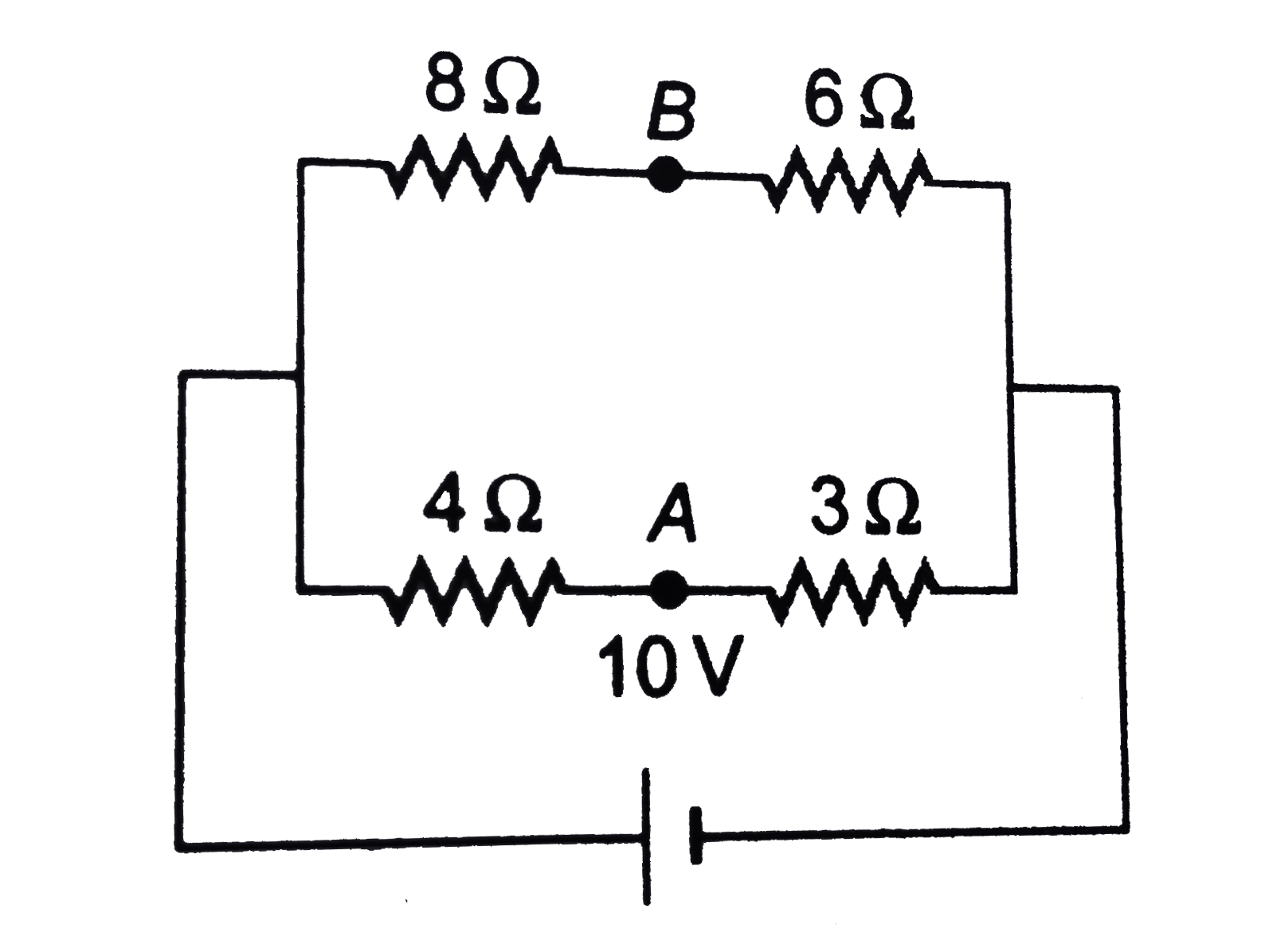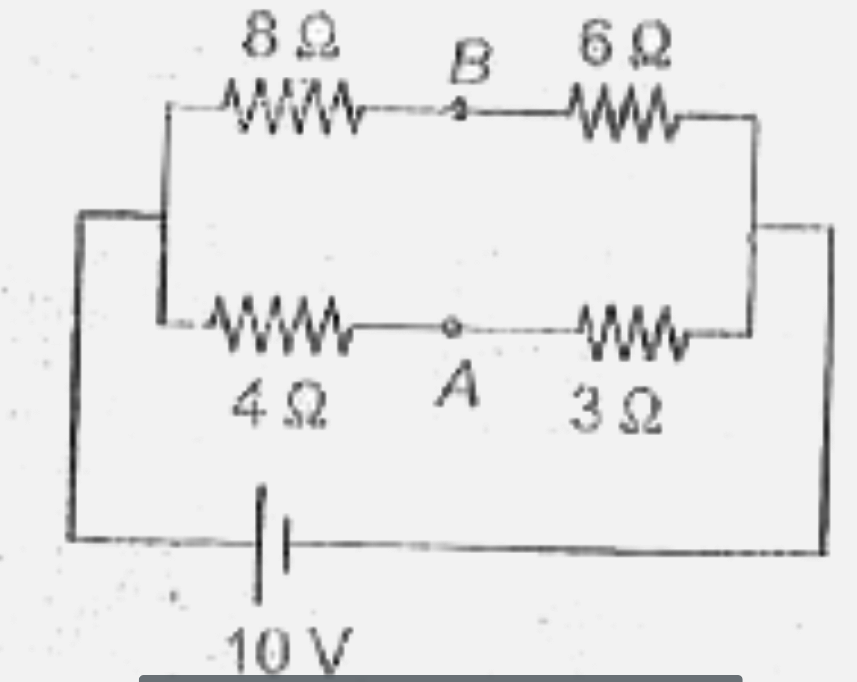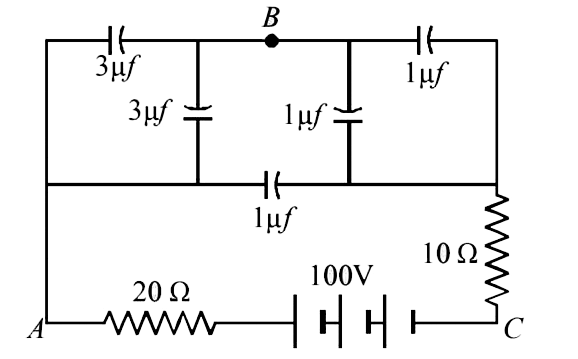How is the electric potential difference between two points defined ? State its S.I. unit.
Step-by-Step Solution:
1. Definition of Electric Potential Difference:
The electric potential difference (often referred to as voltage) between two points in an electric field is defined as the amount of work done in moving a unit positive charge from one point to another against the electric field.
2. Mathematical Representation:
The potential difference (V) can be mathematically expressed as:
V=WQ
where:
- V is the electric potential difference,
- W is the work done in joules (J),
- Q is the charge in coulombs (C).
3. S.I. Unit of Electric Potential Difference:
The SI unit of electric potential difference is the volt (V). One volt is defined as the potential difference when one joule of work is done to move one coulomb of charge.
4. Conclusion:
Therefore, the electric potential difference between two points is equal to the work done in moving a unit positive charge from one point to another, and its SI unit is the volt (V).
---
The electric potential difference (often referred to as voltage) between two points in an electric field is defined as the amount of work done in moving a unit positive charge from one point to another against the electric field.
The potential difference (V) can be mathematically expressed as:
V=WQ
where:
- V is the electric potential difference,
- W is the work done in joules (J),
- Q is the charge in coulombs (C).
The SI unit of electric potential difference is the volt (V). One volt is defined as the potential difference when one joule of work is done to move one coulomb of charge.
Therefore, the electric potential difference between two points is equal to the work done in moving a unit positive charge from one point to another, and its SI unit is the volt (V).
Topper's Solved these Questions
- CURRENT ELECTRICITYBOOK - ICSECHAPTER - CURRENT ELECTRICITYEXERCISE - EXERCISE-8(A) ( MULTIPLE CHOICE TYPE)
2 Videos
- CURRENT ELECTRICITYBOOK - ICSECHAPTER - CURRENT ELECTRICITYEXERCISE - EXERCISE-8(A)(NUMERICALS )
16 Videos
- CURRENT ELECTRICITYBOOK - ICSECHAPTER - CURRENT ELECTRICITYEXERCISE - EXERCISE-8(C) NUMERICALS
35 Videos
- CALORIMETRYBOOK - ICSECHAPTER - CALORIMETRYEXERCISE - EXERCISE-11(B) (NUMERICALS)
15 Videos
- ELECTRO-MAGNETISM BOOK - ICSECHAPTER - ELECTRO-MAGNETISM EXERCISE - EXERCISE-10 (C) NUMERICALS
1 Videos
Similar Questions
The potential difference between points A and B is

View SolutionThe potential difference between points A and B is

View SolutionThe potential difference between points A and B is

View SolutionWhat is heat ? State its S.I. unit
View SolutionDefine velocity. State its S.I. unit.
View SolutionDefine heat with its S.I Unit
View SolutionExplain the statement 'the potential difference between two points is 1 volt'.
View SolutionDefine upthrust and state its S.I. unit.
View SolutionIn the diagram shown find the potential difference between the points A and B and between the points B and C in the steady state.

View SolutionName an instrument that measures potential difference between two points in a circuit.
Difine the unit of potential difference in terms of SI unit of charge and work . Draw the
circuit symbols for a (i) veribale resisitor , (ii) a plug key which is closed one .
Two electric circutirs I and II are shown below.
(i) Which of the two circuits has more resistance?
(ii) Through which circuit more current passes?
(iii) In which circuit, the potential difference across each resistor is equal?
(iv) If R1>R2>R3, in which circuit more heat will be produced in R1 as compared to
other two resistors?
 .
.
View Solution
